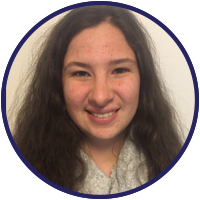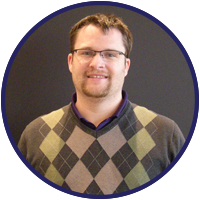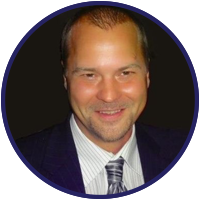2016-2017
Regan Ball – State Science and Technology Fair of Iowa
Reducing pollutant runoff as a result of agricultural practices
This project was a four-year continuation working towards the objective of finding a solution to the amount of pollutants that are produced from runoff as a result of agricultural practices. Read more.
 Jacqueline Blaum – University of Iowa
Jacqueline Blaum – University of Iowa
Binned Likelihood Analysis on the Geminga Pulsar
My project involves the use of Fermi Science Tools analysis software in order to perform a binned likelihood analysis on the Geminga pulsar. Read more.
 Connor Born – Iowa State University
Connor Born – Iowa State University
Low Altitude UAS Traffic Coordination with Dynamic Geofencing
The future of drone operations in low altitude airspace and integration into the national airspace depends, in part, on the efficient utilization of airspace resources and the safe operation and restriction of certain flight plans. Read more.
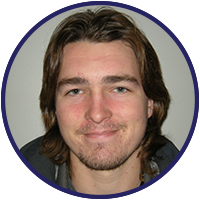 Tate Christensen – University of Northern Iowa
Tate Christensen – University of Northern Iowa
Formation of Titan Aerosols from CO and CO2
I am conducting research regarding Titan, Saturn’s largest moon, under the supervision of Dr. Sebree. Read more.
 Alex Countryman – University of Iowa
Alex Countryman – University of Iowa
Integrated Lab-on-a-chip Life Support System for Manned Space Missions
The overall objective of this research project is to design and construct an innovative, lab-on-a-chip device that can produce breathing quality oxygen, as well as, methane which could, perhaps, be used for propellant. Read more.
 Keith Doore – University of Northern Iowa
Keith Doore – University of Northern Iowa
Using Fourier Coefficients to Examine the Metallicity of the Milky Way and Other Galaxies
The research project I am pursuing is examining RR Lyrae stars in the region of the Galactic bulge from OGLE (Optical Gravitational Lensing Experiment) IV data acquired in 2014. Read more.
 Jonathan Duffy – Iowa State University
Jonathan Duffy – Iowa State University
Non-Destructive device for measuring defects and degradation within metals.
Metals in space can degrade over time, and mechanical stresses can produce cracks or voids. Read more.
William Fuelberth – University of Iowa
HaloSat: The Missing Baryon Problem
The visible universe is made up of atoms that can produce and absorb light. This is called “normal” matter. Read more.
 Kyle Godwin – Drake University
Kyle Godwin – Drake University
Effects of Glutamine Supplementation on Overload-Induced Muscle Growth and Function in Mice
My project looks at muscle growth induced by functional overload combined with glutamine supplementation in mice. Read more.
Jeffrey Hamilton – University of Iowa
How much is episodic air pollution improving in the Midwest?
My project involves the use of Fermi Science Tools analysis software in order to perform a binned likelihood analysis on the Geminga pulsar. Read more.
Cassandra Hardy – Drake University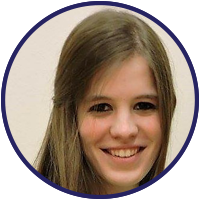
Production of recombinant UL89 from insect cells
Human cytomegalovirus (HCMV) is a virus in the herpes family that affects a large percentage of the U.S. population. Read more.
 Tanner Hartsock – University of Iowa
Tanner Hartsock – University of Iowa
Utilizing an Earth analog for studying the alteration of igneous protoliths on the Martian surface
My research topic involves utilizing Earth analogs for studying the alteration of igneous protoliths on the Martian surface. Askja is a caldera volcano located in the central of Iceland. Read more.
Emma Hawk – University of Iowa
Ion Process Analysis in the Martian Atmosphere
There is an ongoing question of where the water on Mars went. We use data collected with the Solar Wind Ion Analyzer (SWIA) and Suprathermal and Thermal Ion Composition (STATIC) devices aboard MAVEN to analyse the ongoing processes in the Martian atmosphere. Read more.
Jesse Haworth – University of Iowa
The HaloSat Project
The visible universe is made up of atoms that can produce and absorb light. This is called “normal” matter. Read more.
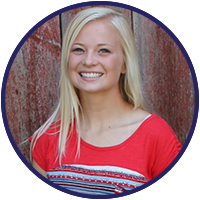 Raegan Hoefler – Iowa State University
Raegan Hoefler – Iowa State University
Growing maize on Mars: Effects of Irradiation Induced Transposable Element Activity on Plant Survival and Development
In the recent movie, The Martian, the protagonist survives by growing a crop of potatoes while stranded on Mars. Is this possible? Read more.
 Clare Laubenthal – University of Northern Iowa
Clare Laubenthal – University of Northern Iowa
Bacterial Study of Titan-Analog Aerosols
In the astrochemistry laboratory at University of Northern Iowa, our ongoing project is the creation and study of tholins. Tholins are defined as a class of heteropolymer molecules formed by a reaction of gas mixtures caused by irradiation of ultraviolet light. Read more.
Dani Lipman – University of Iowa
Characterizing the structure of the Martian bow shock
This project focuses on characterizing the structure of the Martian bow shock using data from the Mars Atmosphere and Volatile EvolutioN mission (MAVEN). Read more.
 Maddie Lorentzen – University of Iowa
Maddie Lorentzen – University of Iowa
Generation of Functional Mechanosensory Organs from Pluripotent Xenopus Cells
The aim of my research is to recreate ear development in animal caps using defined treatments or overexpressed transcription factors. Read more.
Jon MacArthur – Iowa State University
Magnetic Double-Network Composites
My longest running project has been in the fascinating field advanced materials and composites. Alongside my mentor Dr. Wei Hong of the Iowa State University Aerospace Engineering Department, I have been helping research new, double-network composites for possible aerospace applications. Read more.
Sarah Mann – Drake University
Prevalence of Genetic Polymorphisms in the Glutathione S-Transferase P1 (GSTP1) Promoter in Dogs
Glutathione S-transferases, or GSTs, are a superfamily of enzymes that are found in all organisms and function in the detoxification of environmental xenobiotics. Read more.
David Mascharka – Drake Universit y
y
Classification and Compression of Cosmological Data Utilizing Kolmogorov Complexity
In recent years, researchers have utilized Kolmogorov complexity in the classification of various objects, based on normalized compression distance. Read more.
Ross McCurdy – University of Iowa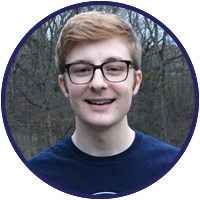
HaloSat: A CubeSat for Studying the Galactic Halo
HaloSat is a NASA funded CubeSat which will help solve the missing baryon problem. Baryons are what make up everyday matter, mainly: protons,
neutrons, and electrons. Read more.
Dillyn Mumme – Iowa State University
Eagle Eye
Eagle Eye is a coaxial rotorcraft proof of concept vehicle for Mars. It would be used to assist in planetary exploration of Mars where traditional rovers or humans cannot go. Read more.
Jonathan Nederhoff – University of Northern Iowa
Identification and characterization of Plutonian and Titan tholins via LDMS and 15N NMR
In our research, we have 2 major projects being completed. Both are allowing for the characterization of tholins produced by Dr. Joshua Sebree in his atmospheric
simulation of Titan and Pluto. Read more.
Michael Ohman – Drake University
Role of DNA methylation and methyltransferases in DNA repair
The primary purpose of my project is to analyze the effect that DNA damaging agents have on global DNA methylation and DNA methyltransferase (DNMT) activity. Read more.
Max Person – Iowa State University
An experimental investigation on the dynamic ice accreation process over a rotating UAS propeller
The experiment was inspired by two things: the change in flight technology and the threat that cold weather can have on aircraft. Read more.
 Matthew Peters – University of Northern Iowa
Matthew Peters – University of Northern Iowa
Creating Mountains with Meteors
Mountains can form in many ways that we know of. A recent theory put forward is if a sufficiently large meteor hits a surface, such as Mars, hard enough a mountain might form on the other side. Read more.
Krista Petersen – Drake University
The effects of endocrine disrupting chemicals (EDCs) on growth and development in zebra finches
The research project seeks to investigate the potential effects of exposure to plastics on multiple generations of zebra finch offspring. Read more.
Rachel Pick – Iowa State University
Bio-Inspired Blade Designs to Reduce Propeller Noise
The owl has long been known to have one of the most silent flights of any bird. There are three main attributes that are thought to lend themselves to this phenomenon that can be applied to reducing propeller noise. Read more.
Cory Reuter – University of Iowa
UAS Framework Development and Analysis
I am undertaking a continuing project of the construction and implementation of unmanned aircraft systems (UAS) that are experiment specific. These projects consist of engineering and implementing specific aircraft for varying situations that are expected by a particular. Read more.
Madeline Roach – University of Northern Iowa
GC/QQQ Limits of Detection for Biomelcules in Abiotic Aerosols
Many groups have attempted to create biological compounds from prebiological atmospheres, such as the reducing atmospheres of Titan and the Early Earth. Read more.
 Joseph Senchuk – University of Iowa
Joseph Senchuk – University of Iowa
JUICE: Radar for Icy Moon Exploration; Ground Support Equipment
JUICE (JUpiter ICy moons Explorer) is a European Space Agency mission planned to spend at least three years making detailed observations of Jupiter and three of its largest moons, Ganymede, Callisto and Europa. Read more.
 Alexis Slade – Iowa State University
Alexis Slade – Iowa State University
Development of Remote Sensing Protocols for Inventory of Nutrient Management Practices
The objective of this project is to develop standard remote sensing protocols for the inventory of cover crops and residue cover. Read more.
 Raymond Sucaet – Iowa State University
Raymond Sucaet – Iowa State University
Development and Analysis of Environmentally Friendly Oxidizers for Solid Rocket Propellent
My project involves the development of more environmentally friendly oxidizers for use in solid rocket propellants. Read more.
 Nicolas Trueba – Iowa State University
Nicolas Trueba – Iowa State University
Calibration of RR Lyrae Period-Luminosity Relation via Advanced Statistical Method
The Carnegie RR Lyrae Program seeks to first calibrate the theoretical relation that makes RR Lyrae variables particularly reliable distance indicators in the mid-infrared, and second, to utilize this high precision relation as part of the cosmic distance ladder, ultimately determining the Hubble constant independently from the distance scale obtained with Cepheid variables. Read more.
Mengyu Wang – Iowa State University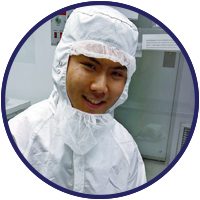
Consumer Attitudes Toward Single Pilot Autonomous Commercial Aircraft and Self-Driving Cars
This project explores a question on the human side of aerospace engineering: can we convince consumers that autonomous commercial airliners will be safe?Read more.
Brian Wendt – University of Iowa
Improving Flight Safety with Better Cockpit Displays
This NASA-sponsored study aims to improve the design of transport aircraft flight deck displays to combat flight crew spatial disorientation. Read more.
 Tyler Williams – Iowa State University
Tyler Williams – Iowa State University
Boundary Element Method Simulation of Elastic Wave Scattering by Interior Defects
Nondestructive Evaluation (NDE) is concentrated on the evaluation of material defects in the various components of engineered systems. The goal is to ensure these defects do not cause the surrounding system to fail while in operation. Read more.
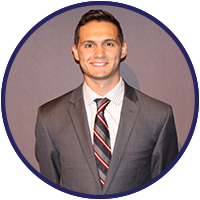 James Wingerter – Iowa State University
James Wingerter – Iowa State University
Eagle Eye: Autonomous Mars Drone
Eagle Eye is a proof of concept vehicle designed to assist astronauts while flying within the atmosphere of Mars. The project objective is to create an autonomous coaxial design that will easily navigate the atmosphere and eventually replace traditional ground based rovers. Read more.
Allison Wold – University of Northern Iowa
Stable isotope chemistry in Titan haze aerosol
Titan, a moon of Saturn, has a thick atmosphere made up of N2 and a few percent CH4, with a surface pressure of 1.5x that of Earth. Read more.




